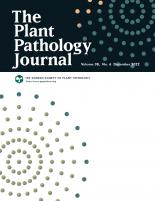The journal adheres to the guidelines and best practices published by professional organizations, including the Core Practices of Committee on Publication Ethics (COPE; https://publicationethics.org/), the Recommendations of International Committee of Medical Journal Editors (ICMJE; http://www.icmje.org/), and the Principles of Transparency and Best Practice in Scholarly Publishing (https://doaj.org/bestpractice). Further, all processes of handling research and publication misconduct shall follow the applicable COPE flowchart (https://publicationethics.org/resources/flowcharts). With regards to other publishing ethics, refer to the homepage ethics section.
- 1. Authorship and Author’s Responsibility
- Authorship credit should be based on (1) substantial contributions to conception and design, acquisition of data, and analysis and interpretation of data; (2) drafting the article or revising it critically for important intellectual content; (3) final approval of the version to be published; and (4) agreement to be accountable for all aspects of the work in ensuring that questions related to the accuracy or integrity of any part of the work are appropriately investigated and resolved. Authors should meet these four conditions.
- • Correction of authorship: Any requests for such changes in authorship (adding author(s), removing author(s), or rearranging the order of authors) after the initial manuscript submission and before publication should be explained in writing to the editor in a letter or e-mail from all authors. This letter must be signed by all authors of the paper. A copyright assignment must be completed by every author.
- • Role of corresponding author: The corresponding author takes primary responsibility for communication with the journal during the manuscript submission, peer review, and publication process. The corresponding author typically ensures that all of the journal’s administrative requirements, such as providing the details of authorship, ethics committee approval, and conflict of interest forms and statements, are properly completed. The corresponding author should be available throughout the submission and peer review process to respond to editorial queries in a timely manner, and after publication, should be available to respond to critiques of the work and cooperate with any requests from the journal for data or additional information or questions about the article.
- • Contributors: Any researcher who does not meet all four ICMJE criteria for authorship discussed above but contribute substantively to the study in terms of idea development, supplied strains or reagents, manuscript writing, conducting research, data analysis, and financial support should have their contributions listed in the Acknowledgements section of the article.
- 2. Conflict of Interest Statement
- The corresponding author must inform the editor of any potential conflicts of interest that could influence the authors’ interpretation of the data. Examples of potential conflicts of interest are financial support from or connections to companies, political pressure from interest groups, and academically related issues. In particular, all sources of funding applicable to the study should be explicitly stated.
- 3. Originality, Plagiarism, and Duplicate Publication
- Submitted manuscripts must not have been previously published or be under consideration for publication elsewhere. No part of the accepted manuscript should be duplicated in any other scientific journal without the permission of the Editorial Board. Submitted manuscripts are screened for possible plagiarism or duplicate publication by Similarity Check upon arrival. If plagiarism or duplicate publication is detected, the manuscripts may be rejected, the authors will be announced in the journal, and their institutions will be informed. There will also be penalties for the authors.
- A letter of permission is required for any and all material that has been published previously. It is the responsibility of the author to request permission from the publisher for any material that is being reproduced. This requirement applies to text, figures, and tables.
- Secondary Publication: It is possible to republish manuscripts if the manuscripts satisfy the conditions for secondary publication of the ICMJE Recommendations.
- 4. Process for Managing Research and Publication Misconduct
- When the journal faces suspected cases of research and publication misconduct, such as redundant (duplicate) publication, plagiarism, fraudulent or fabricated data, changes in authorship, undisclosed conflict of interest, ethical problems with a submitted manuscript, appropriation by a reviewer of an author’s idea or data, and complaints against editors, the resolution process will follow the flowchart provided by COPE (http://publicationethics.org/resources/flowcharts). The discussion and decision on the suspected cases are carried out by the Editorial Board.
- 5. Editorial Responsibilities
- The Editorial Board will continuously work to monitor and safeguard publication ethics: guidelines for retracting articles; maintenance of the integrity of academic records; preclusion of business needs from compromising intellectual and ethical standards; publishing corrections, clarifications, retractions, and apologies when needed; and excluding plagiarized and fraudulent data. The editors maintain the following responsibilities: responsibility and authority to reject and accept articles; avoid any conflict of interest with respect to articles they reject or accept; promote the publication of corrections or retractions when errors are found; and preserve the anonymity of reviewers.






















